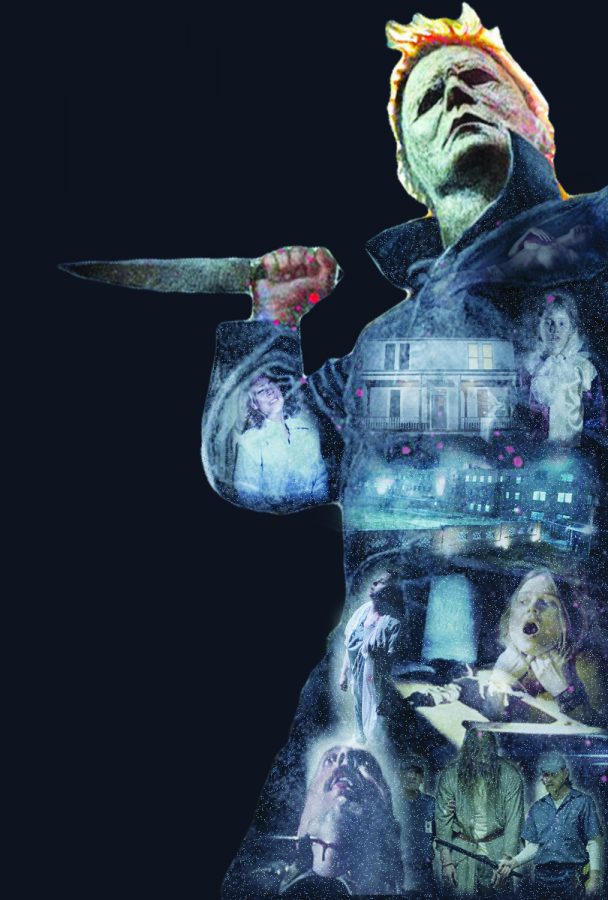Horror sequel revives iconic franchise
Reboot of horror classic breaks box office records
Oct 24, 2018
Nothing screams that time of the year more than the iconic masked serial killer Michael Myers, who returns to the big screen in “Halloween,” directed by David Gordon Green.
With its release on Friday, the film broke box office and franchise records by grossing $33.3 million on that opening day.
The acclaimed sequel to the original 1978 classic by the same name picks up 40 years after teen babysitter Laurie Strode (Jamie Lee Curtis) narrowly escapes Myers’ Halloween killing spree.
It all takes place in her sleepy suburban hometown of Haddonfield, Illinois.
Strode, who has been crippled with PTSD since her bloody battle with the masked murderer, booby-traps her home and stays rifle-ready for the day she is certain he will return.
Although the 2018 reboot of “Halloween” slightly captures the horror magic of the original, it does nothing to elevate the reboot to more than a pale imitation of John Carpenter’s cinematic cult masterpiece.
It’s almost impossible not to compare the two movies when the 2018 sequel follows an almost identical plot trajectory as most of the 10 films in the franchise.
Viewers experience Myers escaping from a mental institution and finding his way back to his hometown on the eve of Halloween in search of that one traumatized teen girl who happened to escape his grasp.
The trajectory is typical, except of course for 1982’s “Halloween III: Season of the Witch,” which removed the on-screen duo of Myers and Strode altogether — and pretty much confused the whole fandom.
The only noteworthy thing that the 2018 reboot has going for it is the fact that screenwriters Green and Danny McBride completely disregard the familial tie Strode and Myers developed over decades throughout the franchise.
In fact, the new direction of “Halloween” completely removes everything known about the franchise, while re-branding it into a moderately quintessential slasher flick.
The real genius lies with having Curtis reprise her role as Strode, which hasn’t been done since 2002’s “Halloween: Resurrection.”
Strode, who seems to keep a gun pointed at everyone she encounters, lives among the solitude of her hidden booby-trapped house.
All is normal until she is paid an unexpected visit by two investigative journalists looking to retell the story of Myers’ infamous rampage through those leaf-littered streets in 1978.
Curtis does a phenomenal job conveying the timid and paranoid demeanor of Strode, who basically becomes a bad-ass survivalist in her 60s following years of torment by Myers.
This fear-induced way of living becomes the catalyst to failed marriages and a strained relationship with her now adult daughter (Judy Greer).
Greer portrays the disengaged and slightly estranged daughter, Karen, who grew up constantly being taught self-defense.
Her mother does everything in her power to protect her from “the shape (Myers).”
In Karen’s eyes, her mother raised her to fear — even the unimaginable. Her upbringing caused friction within her marriage to husband Ray (Toby Huss) and relationship with daughter Allyson (Andi Matichak).
This friction, partly caused by Laurie, unravels throughout the film and relies on the relationship building of Allyson and Laurie’s characters.
This all develops as Myers is once again let loose into the streets of Haddonfield.
Following the clichéd trajectory of being transported and escaping, Michael, along with a busload of inmates, are found wandering on the side of a dark road by a father and son taking a trip into the forest.
Predictably, it doesn’t end well for them as they encounter a mask-less Myers.
Oh, and remember the investigative journalists? Well, their rendezvous didn’t go so well either.
By the time Michael dawns his signature mask, the body count has reached double digits, yet the suspense leading up to these moments of bloody murder seem anticlimactic.
It isn’t until the introduction of Allyson’s friends Vicky (Virginia Gardner) and Dave (Miles Robbins) that the tension is amped up and the audience is finally given the full Carpenter-like “Halloween” experience.
This is really expressed in the legendary camera angles, lighting and storytelling made famous by Carpenter, as Myers begins stalking the innocent.
Of course, it wouldn’t be a “Halloween” movie if there weren’t the slaughtering of a babysitter, which is by far one of the best scenes of the entire film.
Not only does it borrow a classic scene from the original 1978 film, but it builds up the tension and suspense almost perfectly.
Although the movie doesn’t stand up against the original “Halloween” that spawned it all, it does leave its impression on a new franchise.
It doesn’t answer any of the burning questions, like why Laurie? Or how is he so strong at 63 years old?
However, it does shed a different light on the masked maniac and the women who got away.


